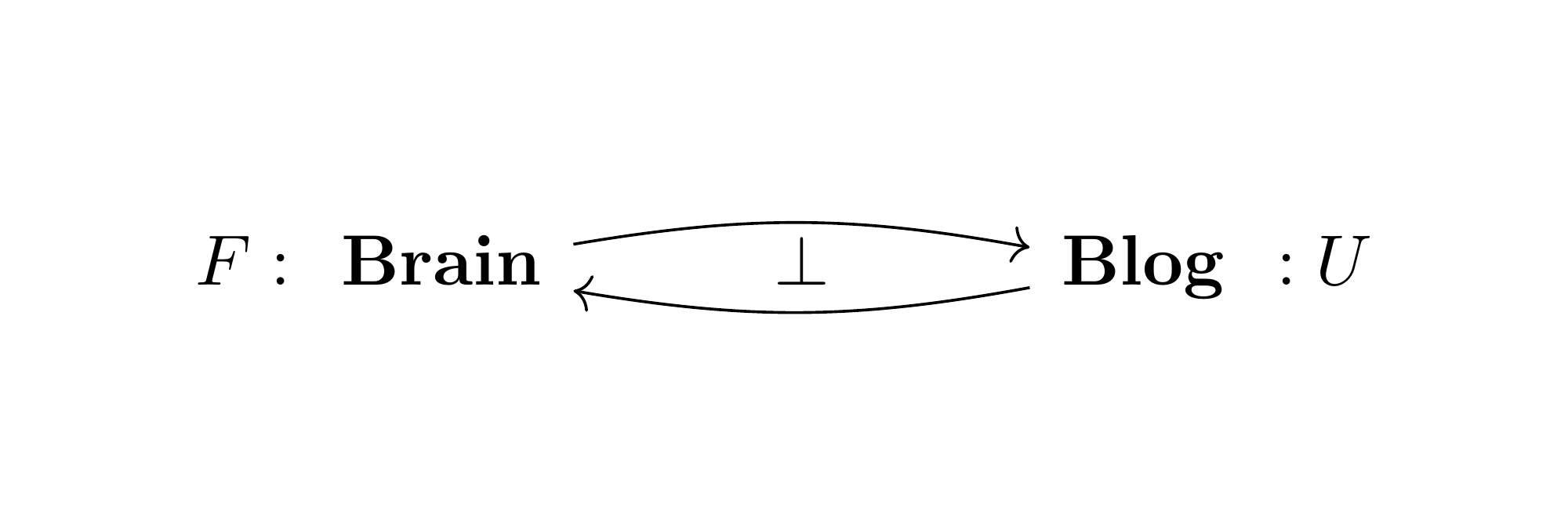I’ve already said countless times that objects of categories are essentially sets (via their representable functors), and this perspective allows us to port set-theoretic concepts and constructions over to objects of an arbitrary category. In particular, it allows us to construct categorical analogues of the axiom of pairing (via the categorical product) and the axiom schema of specification (via equalisers).
From this point of view, the fact that the category of sets has arbitrary limits should be unsurprising—in fact, it should be tautological: limits are specifically designed to model element-wise constructions of sets, so of course
has all of these constructions!
Remark. It’s a bit reductive to say that this fact is tautological, since there is technically something to check, but the completeness of is relatively immediate regardless.
More generally, objects of a category enriched in a (nice) monoidal category are generalisations of objects of
itself, and we can likewise translate some constructions from the theory of
to an arbitrary
-enriched category
.
For example, consider when is the category of complexes of abelian groups, with the usual tensor product. Given a chain complex
, we can define a shifted chain complex
for any integer
by taking
. Now, given an object
of a
-enriched category, we can likewise ask if we can construct a shift
.
To construct such a thing, note that maps of chain complexes naturally correspond to maps
that increase degree by
. Therefore, the analogous shift object
in
should be such that the
-chains
correspond naturally to
-chains
. This can be expressed by defining
to be a weighted limit, where the limit is over the diagram
picking out the object
, and the weight is given by the functor
that picks out the complex
. In other words,
is a representing object for the functor
.
Such shifts need not exist in a general -enriched category, just like how certain limits do not exist in general ordinary categories. However, of course
has shifts as defined above: this is by design!
Other examples come from (weak) 2-categories, which are enriched in the 2-category of (small) categories. On top of usual limit constructions (from the fact that small categories have sets of objects), we can move to general 2-categories various ordinary categorical constructions. For instance, if
is a 2-category, and we have morphisms
, then we can construct a comma object
to be completely analogous to the construction of a comma category in
: specifically, it is the universal object
equipped with projections to
and
and a 2-morphism as in the diagram

Explicitly, can be defined as a weighted limit over the walking span
, where the limit is over the diagram
given by

weighted by the functor given by

(which is to say that a morphism in
is equivalent to giving morphisms
and
and a 2-morphism
). Rephrased, a comma object is precisely a representing object for the functor
. Again, the fact that
has comma objects is essentially by design.
Now that I have asserted that completeness of (and similarly the 2-completeness of
) is automatic, let’s talk about a much less obvious fact:
also has arbitrary colimits (and
has arbitrary 2-colimits)!
Limits formalise elementwise constructions in arbitrary categories and mimic limit constructions in sets, but colimits are also defined in terms of limit constructions in sets! In particular, the colimits in are not used to define colimits in general: we could have defined colimits in arbitrary categories just as well even if
were not cocomplete.
Even if we look at the construction of colimits in , they are not particularly easy to define. The coproduct
is most readily defined using both the axiom of union and the axiom of pairing again to produce the set
(to ensure the disjointness of the individual sets). Even worse, the coequaliser of two functions
is most easily defined by the set of equivalence classes in
for the equivalence relation generated by the identifications
for every
(in particular, the equivalence class is not even given easily). 2-colimits in
are even worse to define.
This seems to suggest that is cocomplete by accident.
However, this is not at all satisfying, because satisfies a 2-universal property with respect to colimits: specifically,
is the free cocompletion of a singleton category (and, likewise,
is the free 2-cocompletion of a singleton). More generally, the inclusion of an arbitrary small category
into its category of presheaves
exhibits the latter as the free cocompletion of
. Is there a good philosophical reason for this?
Honestly, I am not sure; I am just putting my thoughts down here to possibly revisit in the future.
